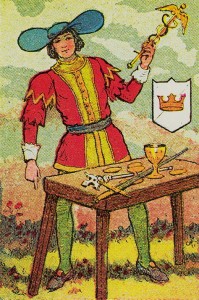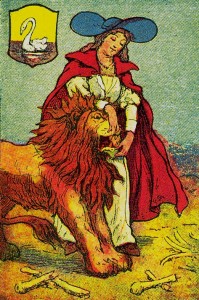 February 18, 2015 – Tarot cards are an ancient book of symbols that represent human archetypes and wisdom. Their origin is shrouded in mystery, and their complexity and layers of meaning has fascinated mystics and scholars for centuries.
February 18, 2015 – Tarot cards are an ancient book of symbols that represent human archetypes and wisdom. Their origin is shrouded in mystery, and their complexity and layers of meaning has fascinated mystics and scholars for centuries.
Essentially, they form a deck of 78 cards. Fifty-six of these are the precursor of our familiar playing cards. There are four suits, numbers 1-10, and four court cards (instead of only the three we are familiar with). The four suits represent the four elements: earth, air, water, and fire, which in turn symbolize the human bodies: physical, mental, emotional, and spiritual.
In addition to these 56 minor arcana cards are 22 major arcana cards. These cards represent the ‘fool’s journey’ or ‘hero’s journey.’ Through your own journey, you discover increasingly intriguing aspects of yourself, and you are guided to a deep inner wisdom and self-understanding.
 Here is how the psychologist Carl Jung describes the major arcana:
Here is how the psychologist Carl Jung describes the major arcana:
“They are symbols, or pictures of symbolical situations. For example, the symbol of the sun, or the tower struck by lightning, or the wheel of fortune, and so on. Those are sort of archetypal ideas, of a differentiated nature, which mingle with the ordinary constituents of the flow of the unconscious, and therefore it is applicable for an intuitive method that has the purpose of understanding the flow of life, possibly even predicting future events, at all events lending itself to the reading of the conditions of the present moment.”*
By creating spreads, laying out the cards in various formations, and interpreting their placement and meaning, a tarot reader helps you gain an insight into situation, dilemma, or relationship that can be as refreshing as opening the window of a dark, stuffy room and letting in clear light and fresh air.
* Visions: Notes of the Seminar Given in 1930-1934 by C.G. Jung, Volume 1
Images from the Knapp-Hall Tarot Deck
